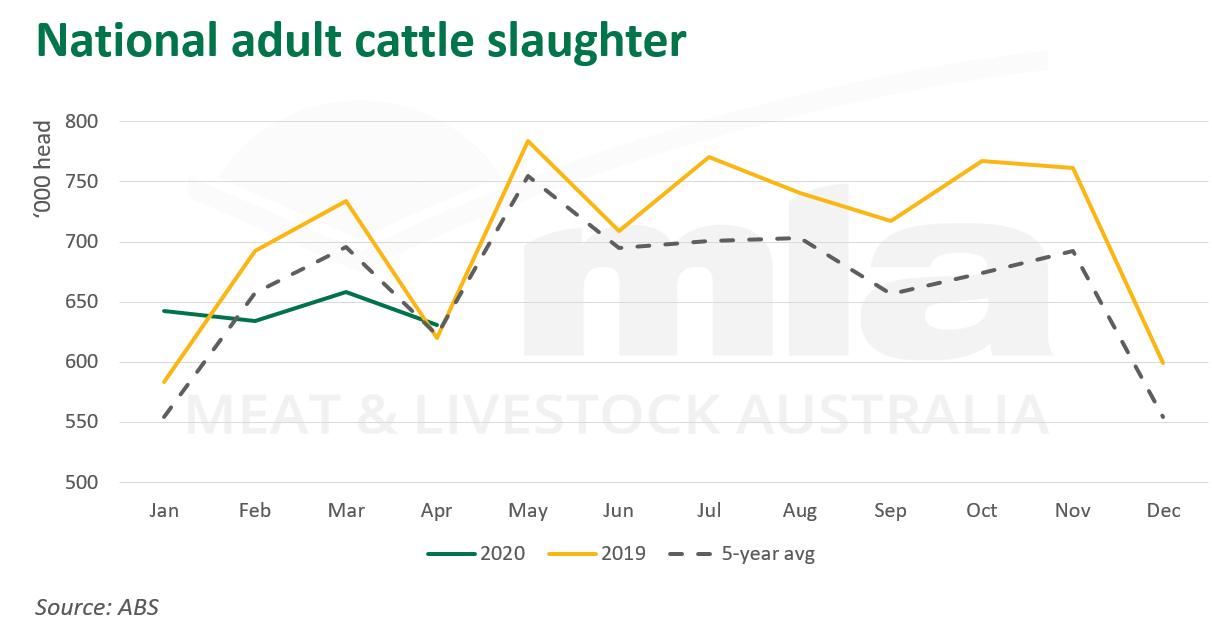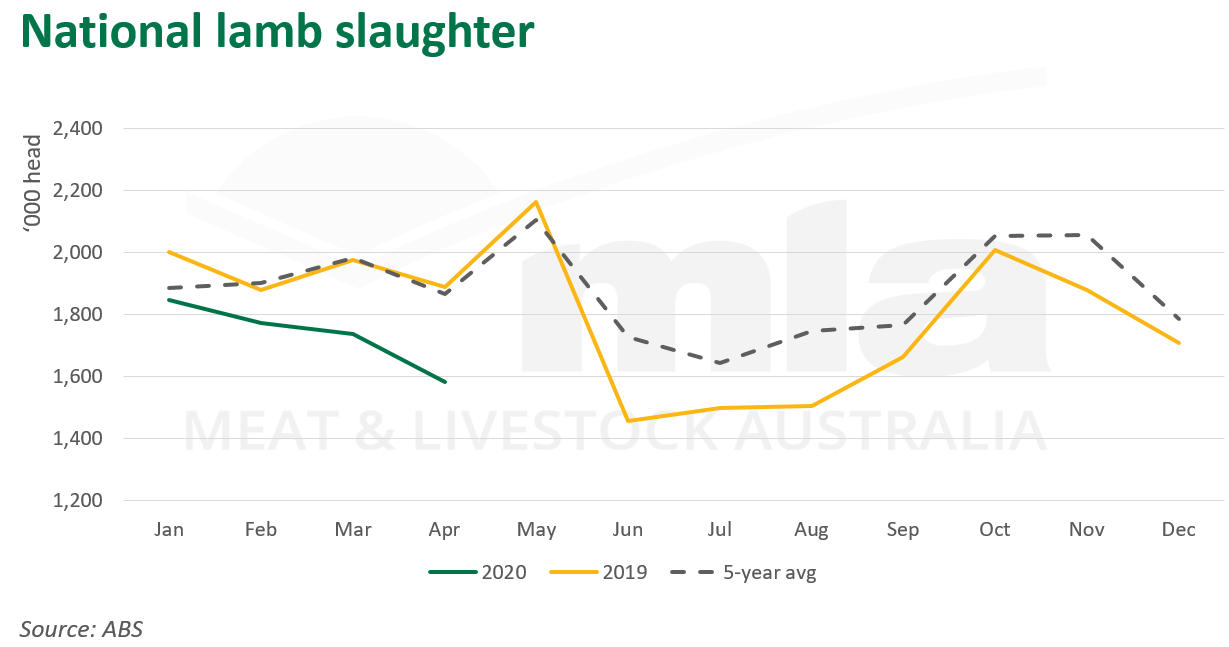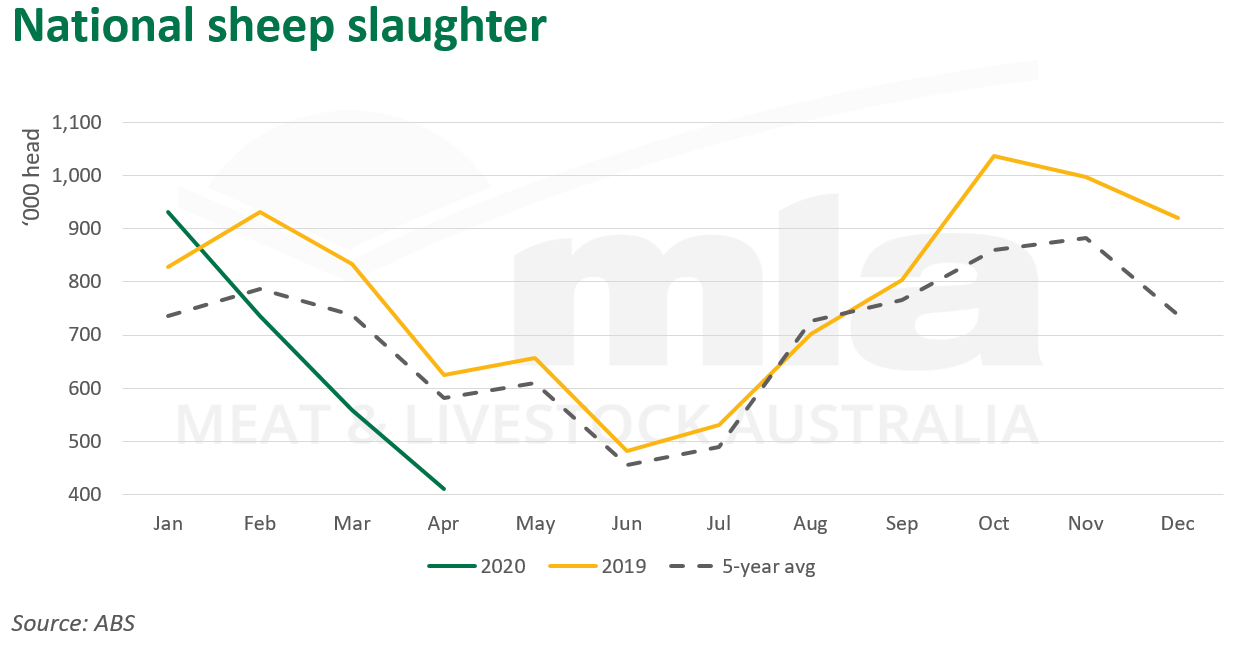Subscribe to The Weekly e-newsletter
For in-depth red meat market news, information and analysis.
Mixed slaughter performance
18 June 2020
Key points:
- Uptick in the percentage of female cattle slaughter in April.
- Sheepmeat production sitting below year-ago levels.
- Average carcase weights up across both sheep and lambs.
Cattle slaughter and production
In April, national adult cattle slaughter was reported at 630,600 head, 2% higher than year-ago levels. New South Wales declined 8% to 133,400 head, while Victoria eased 5% to 130,300 head and South Australia was back 7% to 15,500 head. Processor throughput in Queensland jumped 10% from April 2019 levels to 297,000 head, with Western Australia up 2% to 33,400 head and Tasmania increasing 14% to 21,000 head.
The female portion of adult cattle slaughter climbed to 55% in April, having shown an easing trend since February. While strong prices may have incentivised producers to turnoff stock, this trend will further delay the transition towards a herd rebuild phase. A decline in the number of male cattle processed was also a contributing factor, as the availability of steers in the market is limited. Another explanation for an uptick in the percent of female slaughter is heightened turnoff of grainfed cows and heifers, a legacy from the dry summer as an increased number of female cattle were inducted into feed programs.
Average carcase weights for adult cattle increased 6kg year-on-year to 286kg/head in April, buoyed by increased grainfed turnoff and greater feed availability. Victoria reported the largest improvement from year-ago levels, up 25kg to 278kg, while Tasmania carcase weights increased by 13kg to 290kg and New South Wales improved 5kg to 294kg/head. Queensland weights remained stable on year-ago levels, however, South Australia and Western Australia both saw declines of 10kg and 11kg, averaging 275kg and 253kg/head respectively.
April national beef production was reported at 180,600 tonnes carcase weight (cwt), up 4% on the year prior. Production in New South Wales eased 6% to 39,200 tonnes, South Australia was back 10% to 4,300 tonnes and Western Australia declined 2% to 8,400 tonnes cwt from year-ago levels. Queensland production reported an uptick of 10% year-on-year to 86,400 tonnes, with Victoria increasing 5% to 36,200 tonnes and Tasmania improving 19% to 6,100 tonnes cwt.

Lamb slaughter and production
National lamb slaughter eased by 16% to 1,582,900 head in April, as the flow-on effects from reduced marking rates in 2019 impact supply availability. Lamb production continued to decline from year-ago levels, back 13% to 38,760 tonnes cwt. However, average carcase weights increased 0.9kg from April 2019 to 24.5kg/head, supported by the increased prevalence of lot feeding lambs.

Sheep slaughter and production
April national sheep slaughter totalled 411,200 head, a significant decline of 34% from year-ago levels. Improved seasonal conditions and increased retention of breeding stock has seen sheep slaughter run below 2019 levels for the past three months. In line with reduced slaughter, national mutton production declined by 28% to 10,100 tonnes cwt in April, while average carcase weights increased 2kg from April 2019 to 24.6kg/head.

© Meat & Livestock Australia Limited, 2020


